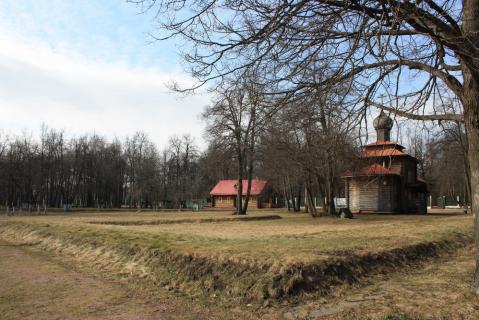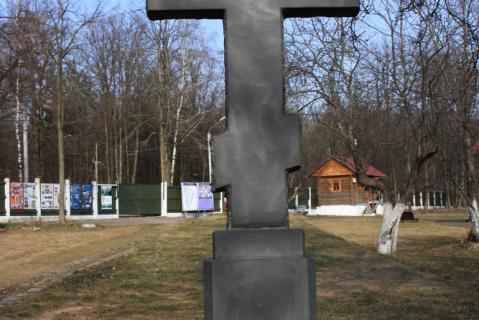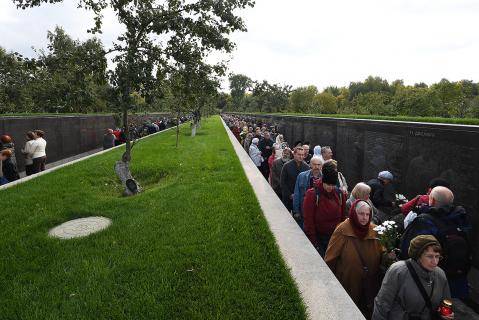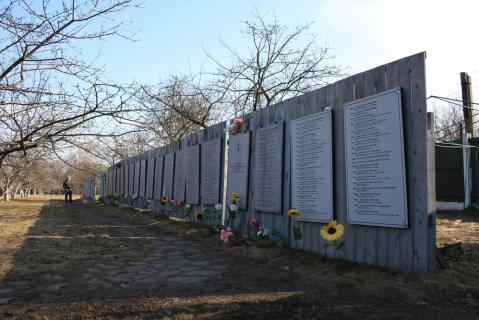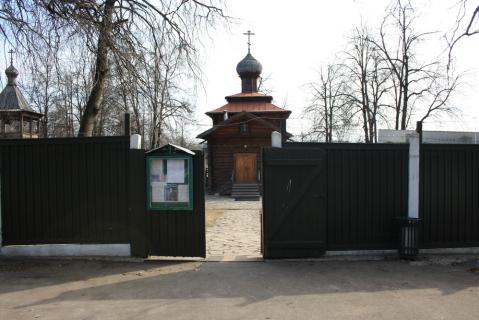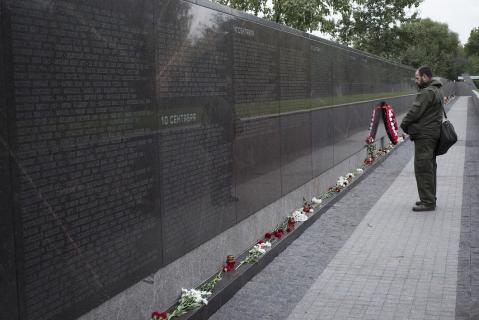The burial of inhabitants of Moscow and the Moscow Region condemned to death in cases dealt with by the Moscow Region NKVD took place from 1937 onward at the NKVD firing range near Butovo, a settlement southwest of Moscow. It has not been confirmed by document whether people were also shot there or if those buried had been executed in Moscow. Only verbal reports by former NKVD staff talk of executions at Butovo during the Great Terror (1937-1938). The burials were made in trenches in the utmost secrecy. In the mid-1950s the “special zone” was shut down, and the firing range was enclosed by a fence topped with barbed wire. Until 1995 the territory remained in the hands of the state security services and was closely guarded.
1992 the Moscow Group for Commemoration of the Victims of Political Repression, aided by FSK-FSB staff, began working for a number of years with investigation files. According to the “The expert conclusion of the FSK archive service”, made public on 6 April 1993, about 25,000-26,000 lay buried at Butovo. In 1995 the FSB transferred the firing range to the Russian Orthodox Church. Since 1997 work has periodically been undertaken to determine the location of the burial trenches. Historical, archaeological, geobotanical and geomorphological investigations have taken place.
The first memorial was erected in 1993 by relatives of those who perished: it reads, “At the Butovo firing range many thousands of Victims of Political Repression were secretly shot in 1937-1953. May they never be forgotten”. In 1994 a commemorative cross was erected. In 1996 a wooden church was consecrated. In 2007 the church of Russia’s New Martyrs and Confessors, built of stone and brick, was consecrated and yet another commemorative cross was erected: it had been made at the Solovetsky Monastery in the White Sea. Earlier, in 2002, the Butovo Research and Education Centre was created as part of the church. Its job was to gather information about the victims of repression, systematise the data, and organise exhibitions and book launches.
*
On 27 September 2017 the “Garden of Remembrance” memorial complex opened in the eastern part of the grounds, where there were no burial trenches and KGB staff had planted an apple orchard in the 1970s. The Garden of Remembrance takes the form of an avenue between symbolically open execution trenches (designer A. Zhernakov). One wall is made up of granite slabs on which the names of 20,762 people have been etched and presented in sequence by their date of execution. The slabs are two metres high, and the complex is 300 metres in length.
A ten-volume Book of Remembrance was published for the city of Moscow and its victims: one each for the Vagankovskoe Cemetery (1995), the Kommunarka “special site” (2000) and the Donskoe Monastery (2005); and seven volumes for the Butovo Firing Range (1997-2003). Together they provided biographical entries on 31,900 who were shot or sent to the camps; this total included brief notes on 5,590 victims of political repression who had not been formally rehabilitated. The 502-page volume Execution lists, Moscow 1937-1941: Kommunarka, Butovo (published in 2000) was superseded by the 7-volume The Butovo Firing Range, 1937-1938: A Book in Remembrance of the Victims of Political Repression (1997-2003).
The Memorial online database (2025) includes 27530 victims in the Moscow Region, and 22,429 for the city (see the Kommunarka “special site”).
The Moscow Region Book of Remembrance offers little information about the many it contains. A separate source, “The Butovo firing range, 1937-8”, lists the 20,762 buried there during the Great Terror.
The Butovo Museum currently has its own website, The Calendar of Memory, that lists those shot day by day from August 1937 onwards. The lists include many who have not since been rehabilitated.
| Date | Nature of ceremonies | Organiser or responsible person | Participants | Frequency |
|---|---|---|---|---|
|
4th Saturday after Easter
|
Celebration of the New Martyrs who suffered and died at Butovo
|
Clergy of the Church of Russia’s New Martyrs and Confessors
|
leading hierarchs of the Russian Orthodox Church, clergy, parishioners
|
Yearly since 2001
|
|
30 October
|
Solemn ceremonies on the Remembrance Day for the Victims of Political Repression
|
Butovo research and educational centre
|
public and clergy
|
Annual event
|
| State of burials | Area | Boundaries |
|---|---|---|
|
Depressions in the soil over the trenches. In 2005, the trenches were given the appearance of burial mounds.
|
The firing range covers 5.6 hectares; the extent of the burials has not been established
|
delineated
|
[ original texts and hyperlinks ]
“Expert conclusion of the FSK archive service, 6 April 1993” (compilers: Mozokhin, Grashovenya, Krayushkin & Zyubchenko), Memorial-Aspekt, 1993, No 1/3 June
The Butovo firing range, 1937-1938, A Book in Remembrance of the Victims of Political Repression, ed. Lida .A. Golovkova, Issues 1-8, Moscow, 1997-2004
“Butovo. A site of mass execution and burial”, Virtual Museum of the Gulag [retrieved, 28 May 2022; no longer accessible]
“The ‘Garden of Remembrance’, Russia’s largest memorial to the victims of repression, has opened”, Novaya gazeta, 29 July 2017 [retrieved, 28 May 2022]
“A memorial naming the victims of Stalinist repression has opened at the Butovo firing range”, RIA Novosti, 27 September 2017 [retrieved, 28 May 2022]


